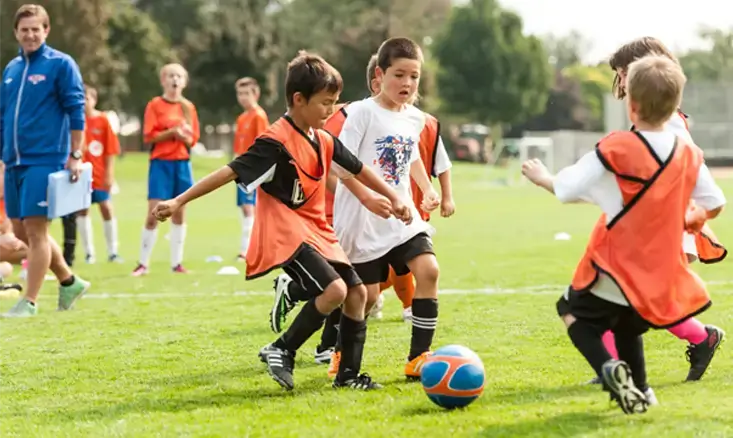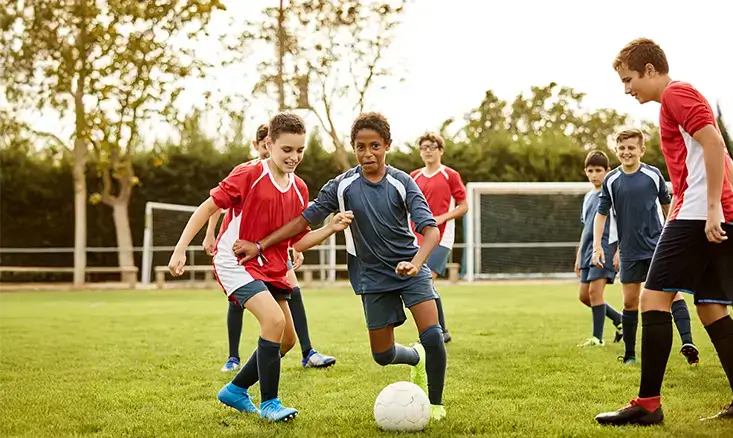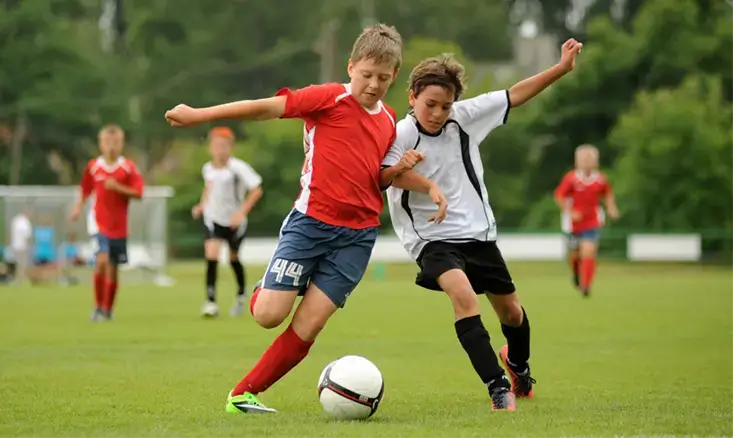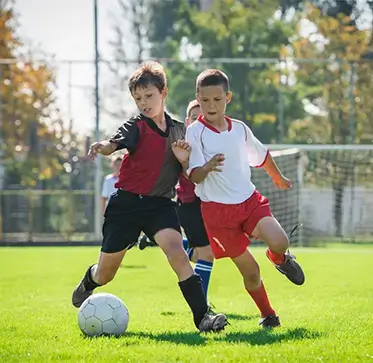CRFC BLOGS
LATEST BLOGS & NEWSLETTERS
Youth Soccer Contact Rules: Everything Parents and Players Need to Know
Youth soccer is among the most popular sports for children and teens worldwide. It helps young players develop athletic skills, teamwork, and sportsmanship. However, many parents and players often need clarification about the rules regarding contact in youth soccer. How much physical contact is allowed? What happens if a player fouls another player? What special rules apply to goalkeepers?
This article will answer all these questions and more. Whether you’re new to soccer or just looking for some clarification, you’ll find all the information you need on youth soccer contact rules, youth soccer rules about contact, and youth soccer rules about contact with the goalie.
Legal Contact in Youth Soccer
What is Legal Contact?
In soccer, some physical contact is allowed, but it must be legal. Legal contact means a player can use their body to challenge for the ball fairly. For example, two players may contact each other to win the ball. This type of contact is part of the game and is often called a “fair challenge.”
In a fair challenge, players can:
- Use their body to shield or protect the ball.
- Engage in shoulder-to-shoulder contact as long as it is done without excessive force and aims to win the ball.
For example, when two players are running side by side, one player may use their shoulder to legally challenge the other player for the ball. This is common and accepted in soccer, as long as the players are focused on the ball and not trying to hurt each other.
How Contact is Regulated in Youth Soccer
In youth soccer, referees are trained to watch for physical contact and ensure it is fair. If contact crosses the line into unsafe or aggressive behavior, referees will step in to stop the play. This keeps the game fun and safe for everyone involved. The younger the players, the stricter referees are about contact because they want to prevent injuries and teach players how to play the game correctly.

Illegal Contact in Youth Soccer
What is Illegal Contact?
-
Pushing
When a player uses their hands, arms, or body to push another player.
-
Tripping
When a player tries to trip an opponent, usually by sticking out a foot or leg to make them fall.
-
Charging
When a player runs into an opponent without trying to play the ball, especially with excessive force.
Consequences of Illegal Contact
- When a player makes illegal contact, the referee will stop the game and award the other team a free kick. A free kick gives the other team a chance to kick the ball without interference from the fouling player. Depending on where the foul occurred, the free kick can be taken from the spot of the foul or from another position.
- If a foul occurs inside the penalty area (the large box in front of the goal), the opposing team is given a penalty kick. A penalty kick is a special type of free kick taken almost 12 yards away from the goal, with only the goalkeeper allowed to try to stop the shot. This is a major advantage for the attacking team, so players should avoid fouling in the penalty area.
- For more serious fouls, the referee may also show a yellow card or a red card. A yellow card is a warning, and if a player gets two yellow cards in one game, they will be sent off the field. A red card means the player must leave the game immediately and cannot be replaced, leaving their team with one fewer player.

Youth Soccer Rules: Contact with the Goalie
What Contact with the Goalie is Allowed?
When it comes to youth soccer rules contact with goalie, the goalkeeper is given special protection. This is because goalkeepers are often in vulnerable positions when trying to catch or save the ball, and unnecessary contact with them can lead to serious injuries.
Here are the main rules about contact with the goalie:
- Players are not allowed to charge or run into the goalkeeper, especially when the goalie is holding or trying to catch the ball.
- A player cannot challenge the goalkeeper if they are reaching for the ball in the air.
- If the goalkeeper has the ball in their hands, any contact with them is considered a foul.
These rules are designed to keep goalkeepers safe since they often put their bodies on the line to make a save. If a player makes illegal contact with the goalie, the referee will almost always blow the whistle and stop play.
How Goalkeeper Protection Works in Youth Soccer
Referees are usually very quick to blow the whistle when there is contact with the goalkeeper. Even if the contact seems minor, it is taken seriously. This is because goalkeepers often have to dive or jump to make saves, putting themselves in dangerous positions. If a player challenges the goalie illegally, it can result in a foul or even a yellow or red card, depending on the severity of the contact.

Youth Soccer Body Contact Rules by Age Group
U8 to U12 Contact Rules
For younger players, such as those in the U8 to U12 age groups, the rules about body contact are stricter. At these ages, players are still learning the basics of the game, and safety is the number one priority. Referees and coaches focus on teaching young players how to interact on the field without being overly aggressive or putting themselves or others at risk.
Here are some key points for younger players:
- Minimal contact is allowed. Referees tend to stop the play for any rough or overly aggressive contact.
- Shoulder-to-shoulder contact is allowed but should be done carefully and with the intention of winning the ball, not knocking over the opponent.
- Slide tackles are generally discouraged or outright banned at younger levels because they can be dangerous if not done correctly.
At these levels, the goal is to help players develop their skills and understanding of the game, so the emphasis is on teaching fair play and sportsmanship.
U13 to U19 Contact Rules
As players get older, such as in the U13 to U19 age groups, the game becomes more physical. These players have developed stronger skills and a better understanding of the game, so referees allow more contact. However, youth soccer body contact rules still aim to ensure safety and fairness.
At these levels:
- Shoulder-to-shoulder challenges are allowed more frequently and with more intensity, as long as the challenge is fair and aimed at winning the ball.
- Slide tackles are generally allowed but must be performed correctly. A player must make contact with the ball first before making contact with the opponent. If a slide tackle is reckless or endangers another player, it will be penalized.
Even though the game becomes more physical at these levels, referees are still strict about fouls that involve pushing, tripping, or other dangerous behavior.
Conclusion
Youth soccer contact rules are designed to keep the game fun, fair, and safe for all players. While soccer does involve some physical contact, it’s important that this contact is legal and controlled. Players must always focus on the ball and avoid aggressive or dangerous challenges. Goalkeepers, in particular, are protected by special rules to ensure they aren’t injured while defending the goal.
FAQs
What are youth soccer rules about contact?
Can players make contact with the goalie in youth soccer?
No, players cannot make unnecessary or dangerous contact with the goalie. Goalkeepers are given special protection because they are often in vulnerable positions when trying to save the ball. Any illegal contact with the goalie will result in a foul.
What happens if a player fouls another player in youth soccer?
If a player fouls another player, the referee will stop the game and award a free kick or penalty kick to the opposing team. For more serious fouls, the referee may show the offending player a yellow or red card.
Are slide tackles allowed in youth soccer?
Slide tackles are usually allowed for older players (U13 and up), but they must be performed safely and cleanly. The tackler must make contact with the ball first, not the opponent. For younger players (U8 to U12), slide tackles are often discouraged or banned.
How do referees protect younger players in youth soccer?
Referees in youth soccer are very strict about rough or dangerous contact, especially for younger players (U8 to U12). They focus on teaching the players how to play fairly and safely, stopping play for any aggressive or illegal contact.

Did you find this useful?


